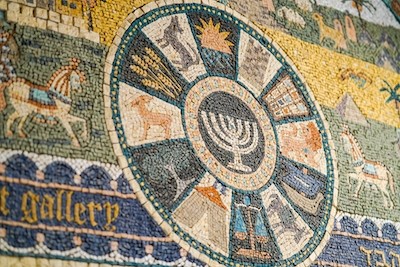The Jewish tradition of placing stones on graves is a time-honored practice steeped in history and meaning. While not a religious commandment, it’s a custom observed by many. But why do Jews leave stones instead of flowers? Let’s explore the various interpretations behind this enduring tradition.
Historical and Symbolic Reasons for Leaving Stones on Jewish Graves
Several theories attempt to explain the origin of this custom. Here are some of the most common interpretations:
A Signal to Kohanim (Jewish Priests)
In ancient times, Kohanim (Jewish priests) were forbidden from coming into contact with the dead, as it rendered them ritually impure. Stone piles on graves served as a clear visual warning to Kohanim, allowing them to maintain a safe distance and avoid ritual impurity. This practical explanation may be one of the earliest reasons for the tradition.
 Stones on a Jewish Grave
Stones on a Jewish Grave
Keeping the Soul Grounded
Some believe that placing stones helps to keep the soul of the deceased grounded in this world. This interpretation stems from Talmudic teachings suggesting that the soul lingers near the burial site for a period after death. The weight of the stones symbolizes a connection to the physical world, offering comfort to the living and perhaps even to the departed. A related belief suggests that stones deter malevolent spirits from disturbing the grave.
A Symbol of Enduring Memory
Unlike flowers that wither and decay, stones remain as enduring reminders of the deceased. They symbolize the permanence of memory and the lasting legacy of a life lived. The act of choosing and placing a stone becomes a tangible expression of remembrance, connecting the visitor to the departed loved one.
A Linguistic Connection: “Tz’ror”
The Hebrew word for pebble, “tz’ror,” also means “bond.” This double meaning offers a poignant interpretation. When reciting the memorial prayer “El Maleh Rahamim,” mourners ask that the deceased be “bound up in the bond of life” – “tz’ror haHayyim.” Placing a stone, therefore, symbolizes this bond, connecting the living and the dead in an enduring link of memory and love. Each stone represents a visit and reaffirms that the individual’s memory lives on through those who remember them.
Personalizing the Ritual
The act of placing a stone on a Jewish grave is deeply personal. There are no prescribed rules for choosing a stone. Some select stones from places that held significance for the deceased, while others choose stones that simply catch their eye. The freedom within this custom allows mourners to connect with their loved ones in a way that feels most meaningful to them. It’s an opportunity to create a personal ritual of remembrance and honor the life of the departed.
Conclusion
While the exact origins of placing stones on Jewish graves remain shrouded in some mystery, the various interpretations offer profound insights into Jewish tradition and beliefs about death, memory, and the enduring connection between the living and the dead. The simple act of leaving a stone becomes a powerful symbol of remembrance, respect, and lasting love. It is a tradition that continues to resonate with Jews worldwide, offering a tangible way to honor the memory of those who have passed on.